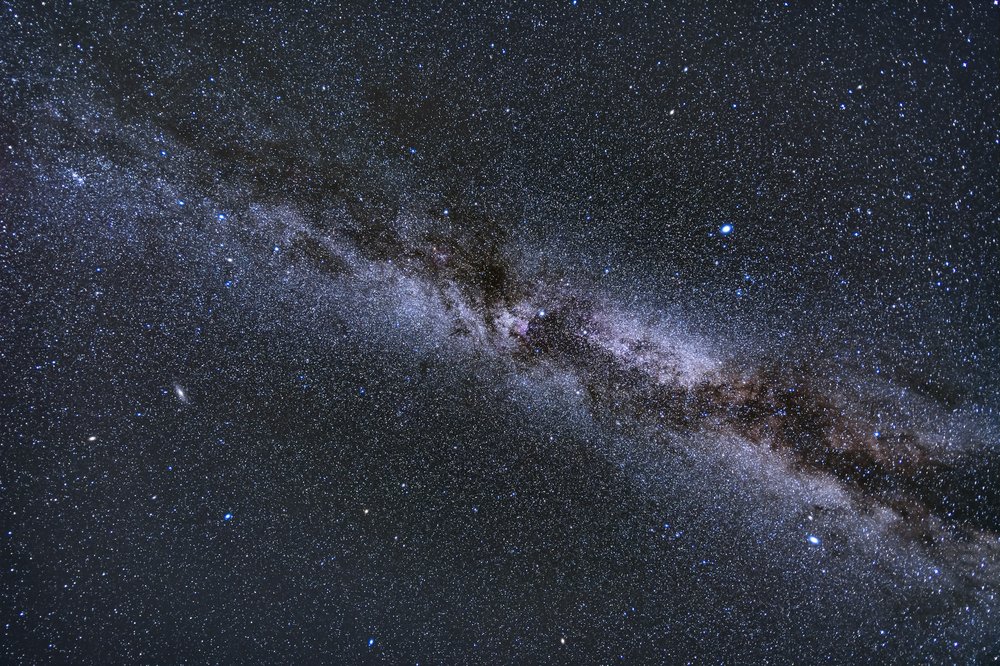NYC summer stargazing seasons kicks off with triangle, meteor showers
June 1, 2025, 8:01 a.m.
NYC's summer stargazing seasons begins with meteor showers and Pedro Pascal.

The summer triangle — the quintessential astronomical sign that days are getting longer and hotter — is back in June.
The harbinger of summer nights comprises three electric-blue stars from three different constellations: Vega from Lyra, Altair from Aquila and Deneb from Cygnus. The triangle is located at the sky's zenith, directly overhead.
“The summer is really the time for the summer triangle,” said Jackie Faherty, an astrophysicist at the American Museum of Natural History.
The summer solstice — the longest day of the year — is on June 20. That means warmer weather for stargazing.
”Solstice means ‘sun stands still,’ so on that day, the sun will set as far north as it's going to in your sky, and we are getting the maximum amount of direct light from the sun,” Faherty said.
This month astronomy buffs can stay up late and watch for the unpredictable Bootids meteor shower. The show begins June 22 and runs through July 2. During its peak on June 27, viewers can count on seeing one or two shooting stars per hour, but the light show can have outbursts. In 1998, astronomers recorded roughly 100 meteors per hour.
The Bootids are slow compared to other meteor showers — streaking across the sky at just over 31,000 miles per hour — which makes them easier to spot. The beaches of the Rockaways are ideal places for lounging under the stars.
”Any meteor shower is worth it if you catch some really good meteors,” said Bart Fried, a member of the American Astronomical Society. “You don't need any equipment. You really want to use the naked eye, peripheral vision, and lay back so that you can comfortably look at a big expanse of the sky, and that drastically increases your chances of seeing meteors.”
Located near the center of the Milky Way is the constellation Scorpio. Its brightest star, Antares, is often mistaken for Mars. On June 9, the deep red star will appear next to the moon, making the S-shaped Scorpio easy to find.
Also appearing near the moon on the first night of the month is Regulus, the bright pale-blue star in the constellation Leo, another classic summer configuration. Mars will also appear near the moon that evening. On June 28 and 29, the red planet will be so close to the crescent moon, it may appear the two celestial bodies are touching.
The warmer weather also means more astronomy events, where amateurs can get a look into deep space to see planets and star clusters. The Amateur Astronomers Association hosts two to three events every week on piers, sidewalks, parks and plazas in various locations throughout the city. The group is also hosting its Spring Starfest on June 20, which was rescheduled from last month due to the weather. The event starts at 8 p.m. at the Evergreens Cemetery in Brooklyn. Many telescopes will be set up with experts on hand to guide the public through the cosmos.
For those looking for an indoor or daytime stargazing experience, the American Museum of Natural History is opening a new planetarium show on June 9, narrated by actor Pedro Pascal, who is no stranger to the cosmos through his sci-fi roles in “The Mandalorian” and “Fantastic Four.” Museum officials say he was their top choice for the job and that he readily accepted. The “Encounters in the Milky Way” show highlights moments in the past and future of our solar system, including the paths of stars and comets.
“My favorite part of having Pedro be a part of the show is that he's Chilean and the best telescopes in the world are Chilean,” Faherty said. ”He's a perfect pick for us. He's also just got a very soothing voice.”
Astronomy lover's telescope transforms Park Slope into nighttime planetarium